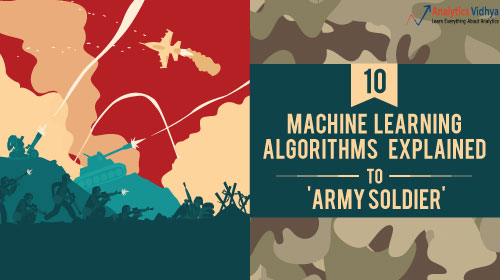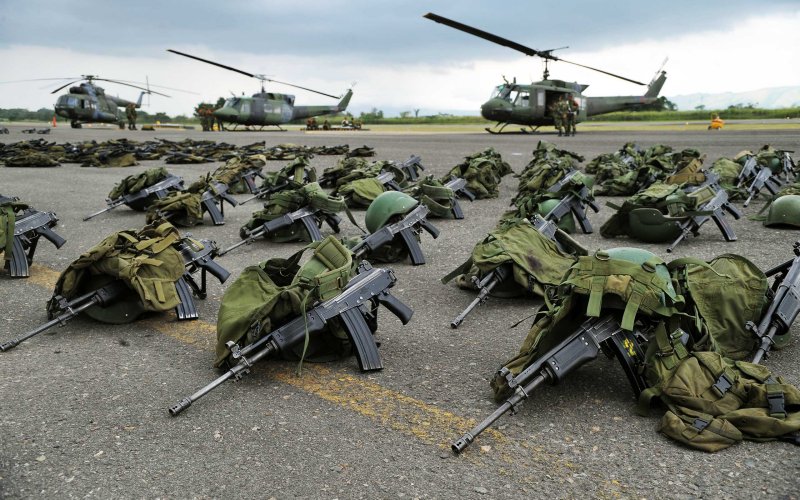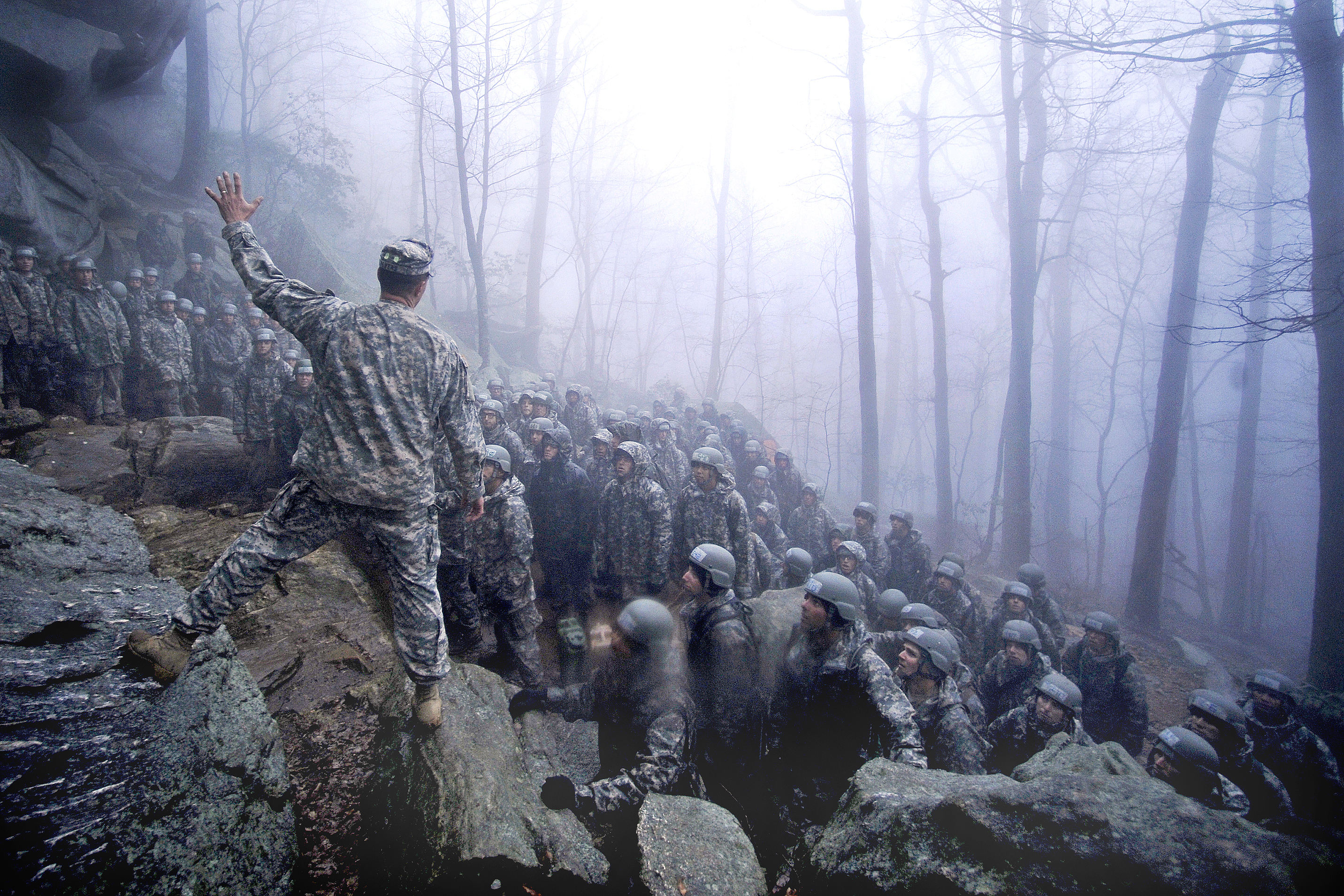Introduction
If you think deep, you’d realize the whole process of predictive modeling is a war. Ruthless war. Don’t you believe me?
Consider the data set as your opponent. Your knowledge of data mining & ml algorithms as your weapons. Your win will depend on the intuitive usage of your knowledge & strategy to get highest accuracy. So, how many times have you won this battle?
Here’s my short story.
I realized it last week. While travelling to south, I met a person whose daughter is a data scientist. That’s all he knew when I asked him about his kid’s profession. He didn’t get much time to spent with his daughter. He was a soldier.
He inquired about me too. His eyes glowed with ecstasy when he found out that I’m also a data scientist. He inquired further. Precisely, he was curious to know about ML Algorithms. It’s a lot being used in defense these days, he said.
This was a tough task for me. I didn’t know how to explain the technical stuff to a soldier. I found out a way. I knew he would surely understand things about battle, warfare, strategy. I explained him machine learning in these terms. In the end, he was convinced that his daughter has landed herself into a challenging job. He felt proud.
In this article, I’ve revealed that approach used to explain ML algorithms to the soldier. Though, there would be less soldiers who would read this, yet this idea promotes an interesting way of learning. This would surely help beginners who are struggling to understand these algorithms. I’ve also added images to help you visualize the situation and learn.
Note: The objective of this article is to help people learn machine learning in a fun and interesting way. You’ll also notice every algorithm has its own special situation where it is used.
This is how I started!
There are 3 Categories of Machine Learning Algorithms
Supervised Learning : You go on a war and don’t stop until you kill all your enemies whoever comes your way. It include algorithms such as Linear Regression, Logistic Regression, Decision Tree, Random Forest etc.
Unsupervised Learning : Your rival has challenged you for a war. Now, you decide after assessing your strengths and weakness, whether to accept the challenge or surrender. It include algorithms such as k-means, apriori etc
Reinforcement Learning : You’ve accepted the challenge. The war has begun. After every hour, you are accessing your position in the battle. Are you loosing more men? Is the opponent dominating? And, accordingly you decide where to continue or surrender. It includes algorithm such as markov decision process.
These are commonly used Machine Learning Algorithms
These algorithms are nothing but the weapons used to fight data sets. Make sure you learn them well to build your armory. Look, I’ve 10 weapons in my armory. How many have you got?
Let’s see my way of explaining these algorithms to the soldier. You can also view the below video that gives you a quick overview of these techniques!
1. Linear Regression
Linear Regression is completely taking over your opposition. Once you’ve entered the battle ground, don’t look back. Only take rest, once you’ve satisfactorily killed all your enemies.
2. Logistic Regression
Logistic Regression is taking simplistic assumptions and then deciding whether to go on a war or not.
3. Tree Based Modeling
This includes Decision Trees, Random Forest. Tree Based Modeling is simply Divide and Rule. You divide your opponents with some smart strategy and kill them.
4. Bayesian Modeling
Bayesian Modeling is considering your probability of winning in different battle base types such as air battle, land battle, water battle. And, accordingly take the overall decision of battle.
5. Support Vector Machines
SVM is drawing out territory and boundary where you’ve advantage on field base. For example, your soldiers might be adept to fighting in specific areas such as desert / mountain / fields and declare the war accordingly.
6. kNN (k Nearest Neighbour)
kNN is checking past outcomes and mapping accordingly. Evaluate your performance in past battles, contemplate on your weak and strong areas and prepare for the next battle accordingly.
7. k-means
k-means is building up alliances (groups) with provinces which share the same philosophy, goals and motives. The idea is to become more powerful than ever before.
8. Neural Network and Perceptrons
Neural Network is every soldier in your army decides whom to fight. Imagine, the situation arising when soldiers run towards enemy soldiers and instantly decide which soldier to fight. Naturally, every soldier would prefer to fight a weaker enemy soldier (watch and analyze) so that he can kill as many quickly. Overall, this strategy would impact the performance of whole army.
9. Ensemble Modeling
Ensemble Modeling is when an army consists of men skilled in various combats such as archery, knife fighting, swordsmen, shooting etc which shares a common motive of ‘victory over enemies’. All these men together would result in a formidable army.
10. Anomaly Detection
Anomaly Detection is checking for unusual patterns in your own army. You may have a secret agent among your soldier brothers. Keep your periodic checks on.
End Notes
I hope now you understand these algorithms well. This is how I helped that soldier to understand these algorithms. I believe, the most difficult things in nature, do have a simple explanation to offer. We just need to start relating this around us. As I just did. People new to machine learning, would now find them easier to remember and apply these algorithms.
In this article, I’ve explained machine learning algorithms to a soldier in terms of war, battle, and strategy. Do you find watching battle, wars interesting? If yes, you would surely find an interest here.
Did you find it useful ? Do share your opinions / suggestions in the comments section below. I’d love to talk.















